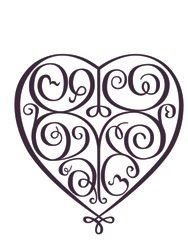
Esta imagem no sítio da Rosa é tão linda.
Ontem eu encontrei esta imagem de um menino, retirada de um livro do Padre Fontes, que também me fica na alma.
Imagem de:
Etnografia Transmontana: Crenças e Traduções de Barroso.
de António Lourenço Fontes 1979.««E pastores há que dela se têm servido para afugentar os lobos dos rebanhos. «A capucha têm voz»-- pois gente que dela se tem aproveitado para tal efeito, assegura que não há lobo que vendo sacudir fortemente a capucha e ouvindo a sua voz, não fuja a sete pés.»»
Texto deste livro:
Artes e Tradições de Viseu, Direcção-Geral da Divulgação,1982. Terra Livre.
Eu não conhecia a capucha portuguesa até o Luís me «pôr» nas mãos aquele livro das Artes e Tradições de Viseu.
É claro que a capucha é algo do campo, algo serrano e isso tem muito haver comigo, com a minha maneira de ser e sentir a terra portuguesa. Mas quanto mais leio sobre ela mais vejo que a capucha era literalmente um conforto, um aconchego, um agasalho, uma segurança para quem a usava.
Com a capucha usada como rodilha, rodoiça ou mantula à cabeça, aguentavam-se os pesos que se transportavam pelas nossas serras. Como manta, sobre ela comiam depois dos trabalhos no campo.
À noite na cama ajudava aquecer contra o frio... E com a sua «voz» assustava os míticos lobos.
The photograph on Rosa's page is so beautiful.The photograph I found yesterday of this little boy, taken from the book below also resides in my soul.
««Sheep herders used the capucha to frighten away wolves from their flocks. «the capucha has a voice»-- there are people who have claimed to use it for this purpose, and exclaim that there is no wolf alive that after hearing the snap of a capucha and its voice does not flee on seven feet.»»
I did not know of the portuguese capucha before Luís gave me the book Artes e Tradições de Viseu.
The capucha is a rural object, from the mountains, something with which I identify myself with and it is from this point of view I most experience this country´s soul from. But the more I read about the capucha the more I understand that it served literally as a comfort, security, a nd shelter for those who used it.
The capucha used as a rodilha, rodoiça ou mantula served as protection from the heavy loads women usually carried on their heads. It served also as a blanket on which people ate their lunch on when working in the fields.
And at night it served as a blanket to keep warm from the cold....and with its «voice» it scared away mythical wolves.




























